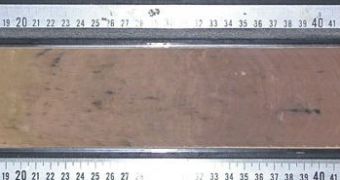Experts have just finished developing a new climate model, which is capable of accurately assessing the rate at which the Earth's oceans are getting more acidic. According to preliminary data obtained by running it, it would appear that the rate of changes in the carbonate chemistry of the waters increases now faster than it did anytime during the past 65 million years. That was the time of the Cretaceous-Tertiary (K-T) extinction event that saw the mass killing of all dinosaurs, among countless other species. The model also offers some clues as to how oceans will evolve in the future, PhysOrg reports.
The model also hints at a worrying future, in which the rate at which the waters gain carbon dioxide moves faster upwards than the plankton's ability to adapt. If this threshold is breached, then we could expect to see massive changes in oceanic environments, as many species of fish and other marine creatures will find it impossible to adapt to the new, elevated pH. Details of the investigation appear in the latest issue of the respected scientific journal Nature Geoscience. The model was developed in the UK, at the University of Bristol.
The new pieces of information are based on a simulation that compares current acidification rates with the Paleocene-Eocene boundary greenhouse event, which took place about 55 million years ago. During this event, global water temperatures rose between five and six degrees Celsius in just a few thousand years, which is a blink of an eye in geological terms. Marine biologists say that, while most organisms living in ecosystems near the surface of the ocean experienced no drawback from this rise, those living in the deep, near the floor, suffered one of the largest extinctions in history.
“The widespread extinction of these ocean floor organisms during the Paleocene-Eocene greenhouse warming and acidification event tells us that similar extinctions in the future are possible. Unlike surface plankton dwelling in a variable habitat, organisms living deep down on the ocean floor are adapted to much more stable conditions. A rapid and severe geochemical change in their environment would make their survival precarious,” UB expert Dr. Andy Ridgwell, who is also the lead author of the new journal entry, explains.
“Therefore, a lot of attention has recently focused on looking at known ocean acidification and biotic reactions in the geological record. Various types of geological evidence – the spread of warm water organisms towards the poles and the dissolution of carbonate sediments on the sea-floor tell us there was simultaneously both extreme warming and acidification at this time – the hallmark of a massive greenhouse gas release,” another author of the paper, Dr. Daniela Schmidt, says.

 14 DAY TRIAL //
14 DAY TRIAL //